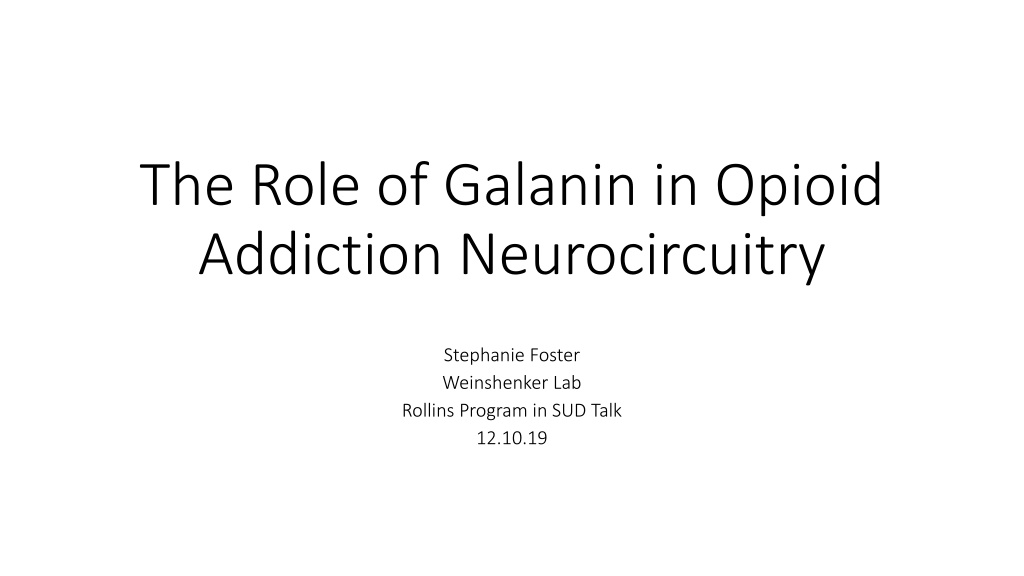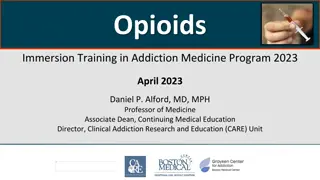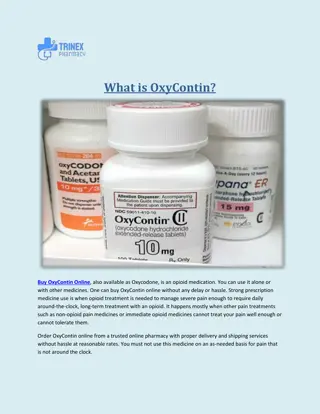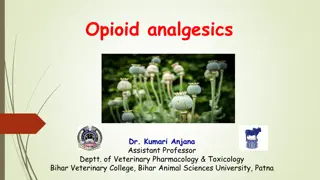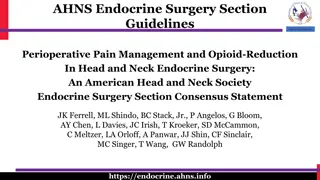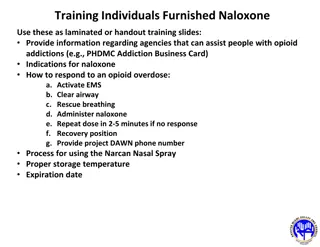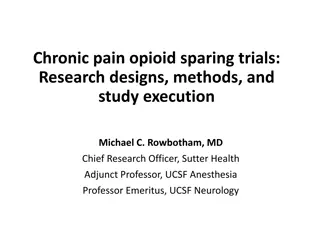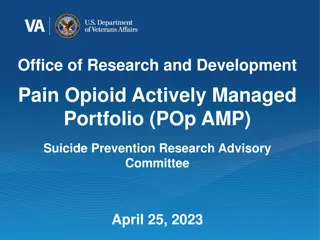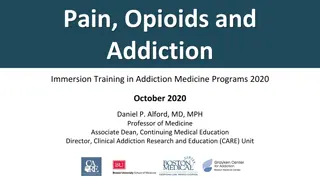Understanding the Role of Galanin in Opioid Addiction Neurocircuitry
Galanin, a peptide expressed in the brain and periphery, has shown potential in protecting against opioid-associated behaviors. Studies have linked a GAL gene variant to heroin addiction and demonstrated Galanin's protective effects in rodents against opioid-related behaviors. Major questions revolve around the distribution of Galanin receptors in neural circuits related to opioid addiction and the underlying mechanisms of Galanin's protective effects.
Download Presentation

Please find below an Image/Link to download the presentation.
The content on the website is provided AS IS for your information and personal use only. It may not be sold, licensed, or shared on other websites without obtaining consent from the author. Download presentation by click this link. If you encounter any issues during the download, it is possible that the publisher has removed the file from their server.
E N D
Presentation Transcript
The Role of Galanin in Opioid Addiction Neurocircuitry Stephanie Foster Weinshenker Lab Rollins Program in SUD Talk 12.10.19
Basic science approach to addiction research Characterize 1) changes that drugs induce in the brain and 2) factors that may increase susceptibility Behavioral Electrophysiological Molecular Identify targets (circuits, proteins, etc.) that block/reverse drug actions Goal: Provide preclinical evidence for possible new therapeutic approaches
Current treatments for OUD are insufficient 2015 2015 2016 2016 2017 2017 *FDA-approved drugs Binge/ Intoxication Relapse 130 115 91 Methadone, Buprenorphine Lofexidine AMERICANS Preoccupation/ Anticipation Withdrawal/ Negative Affect Adapted from Koob and Volkow (2016) Lancet Psychiatry
What is galanin? Peptide expressed in brain and periphery 3 receptor subtypes GalR1 and GalR3 Gi coupled GalR2 Gq, Gi, or G12/13 Modulates feeding, parental behavior Implicated in Alzheimer s disease, epilepsy, mood/anxiety disorders, pain, and addiction The Human Protein Atlas
How is galanin relevant to opioid use disorder? GAL gene variant associated with heroin addiction Levran et al. (2008) Genes Brains Behav. Galanin protects against multiple opioid-associated behaviors in rodents Binge/ Intoxication Binge/ Intoxication Hawes et al. (2008) Neuropsychopharmacology Zachariou et al. (1999) Brain Res. Ogbonmwan et al. (2015) Psychopharmacology Relapse Preoccupation/ Anticipation Preoccupation/ Anticipation Withdrawal/ Negative Affect Withdrawal/ Negative Affect Holmes et al. (2012) Psychopharmacology Adapted from Koob and Volkow (2016) Lancet Psychiatry
Major Questions 1) What is the distribution of galanin receptors (GalRs) in neural circuits related to opioid addiction? 2) Does opioid exposure alter this distribution? 3) What is the mechanism underlying galanin s protective effects against opioids?
Background addiction circuitry Ventral tegmental area (VTA) dopamine (DA) release triggered by drugs of abuse Koob and Volkow (2010) Neuropsychopharmacology
Background opioid effects on VTA DA X GABA DA Koob and Volkow (2010) Neuropsychopharmacology Adapted from Fields and Margolis (2015) Trends Neurosci. Are GalRs expressed in these regions?
Distribution of GalRs Problem: No reliable antibodies for GalRs Solution: Study GalR mRNA instead of protein
Distribution of GalRs 1) Collect sections from projection areas 2) RNAscope for GalR1-3 3) Imaging for colocalized signal GABA Adapted from Fields and Margolis (2015) Trends Neurosci. NAc
Tissue: LC Probes: GalR1, GalR3 IHC: Tyrosine Hydroxylase (TH) Visualization of GalRs GalR1 Merge DAPI GalR3 TH
Questions 1) What is the distribution of galanin receptors (GalRs) in neural circuits related to opioid addiction? 2) Does opioid exposure alter this distribution? 3) What is the mechanism underlying galanin s protective effects against opioids?
Mechanism galanin/opioid crosstalk VTA contains GalR1-MOR heteromers capable of blocking MOR function Galanin Opioids GalR1 DAPI GalR1 MOR Ferre (2017) Curr Treat Options Psych
Summary of work We are interested in: Identifying possible sites of action for galanin in addiction circuitry by characterizing receptor distribution Evaluating whether opioid exposure alters receptor distribution Testing whether Gal-MOR heteromers may serve as a target for blocking opioid-mediated effects in the brain
Future directions Biased Ligands Drugs that target the Gal-MOR heteromer Advanced sequencing approaches Genetic profiles of neurons that express MOR and GalR versus MOR alone
Potential Collaborations Clinical investigators involved in drug screening/development for OUD Investigators studying effects of early intervention for OUD Culturally conscious interventions for Native communities
Acknowledgements Funding Sources F31DA044726 Weinshenker Lab Claire Galloway Chicora Oliver Rachel Tillage Danny Lustberg Michael Kelberman Alexa Iannitelli Canaan Jerome Ryan McCann Shiv Chawla Genevieve Wilson Gourley Lab Laura Butkovich Paladini Lab Alyssa Petko Jensen Lab Kathleen Smith Emory Eye Center Micah Chrenek Emory University Integrated Cellular Imaging Microscopy Core
